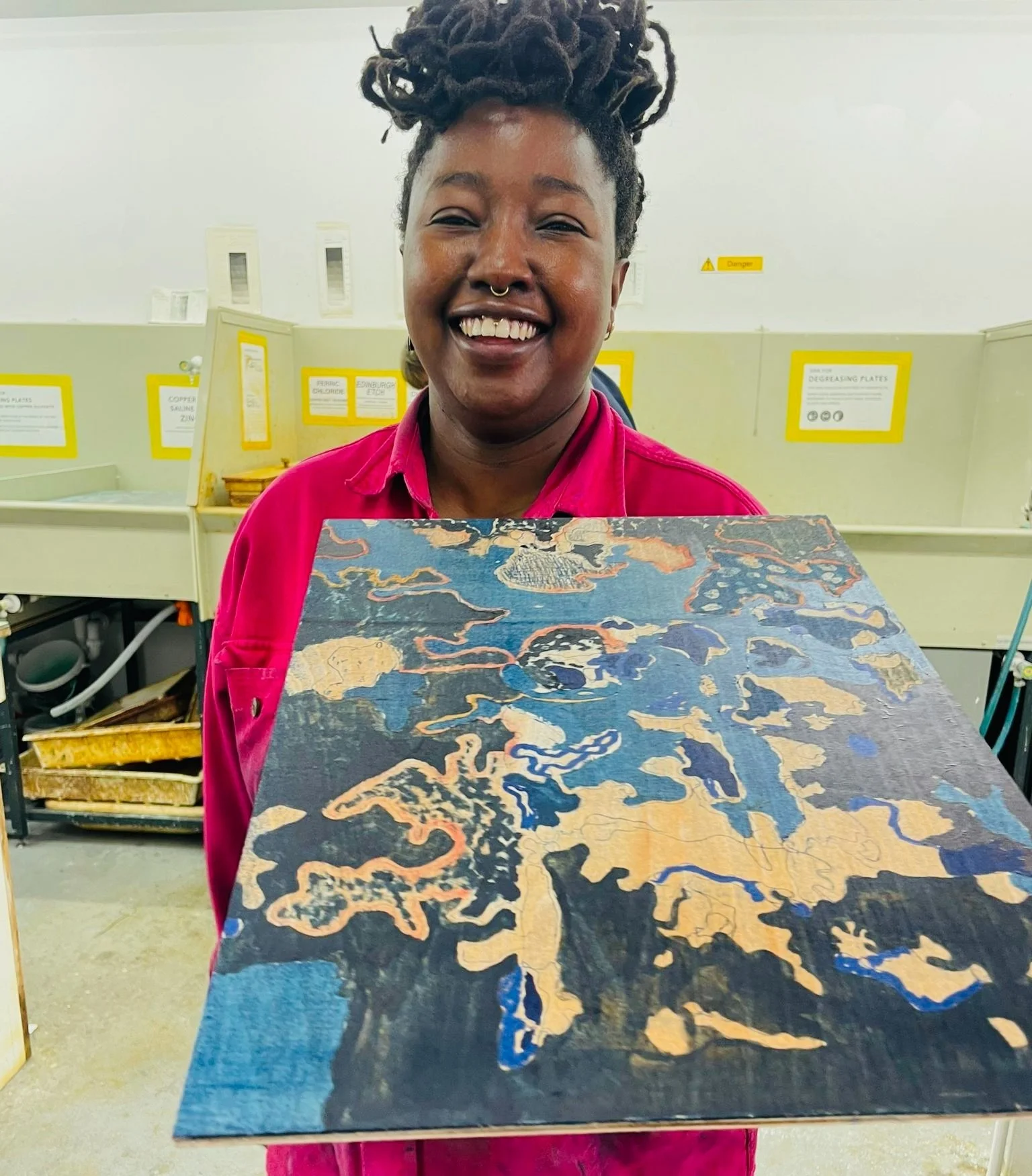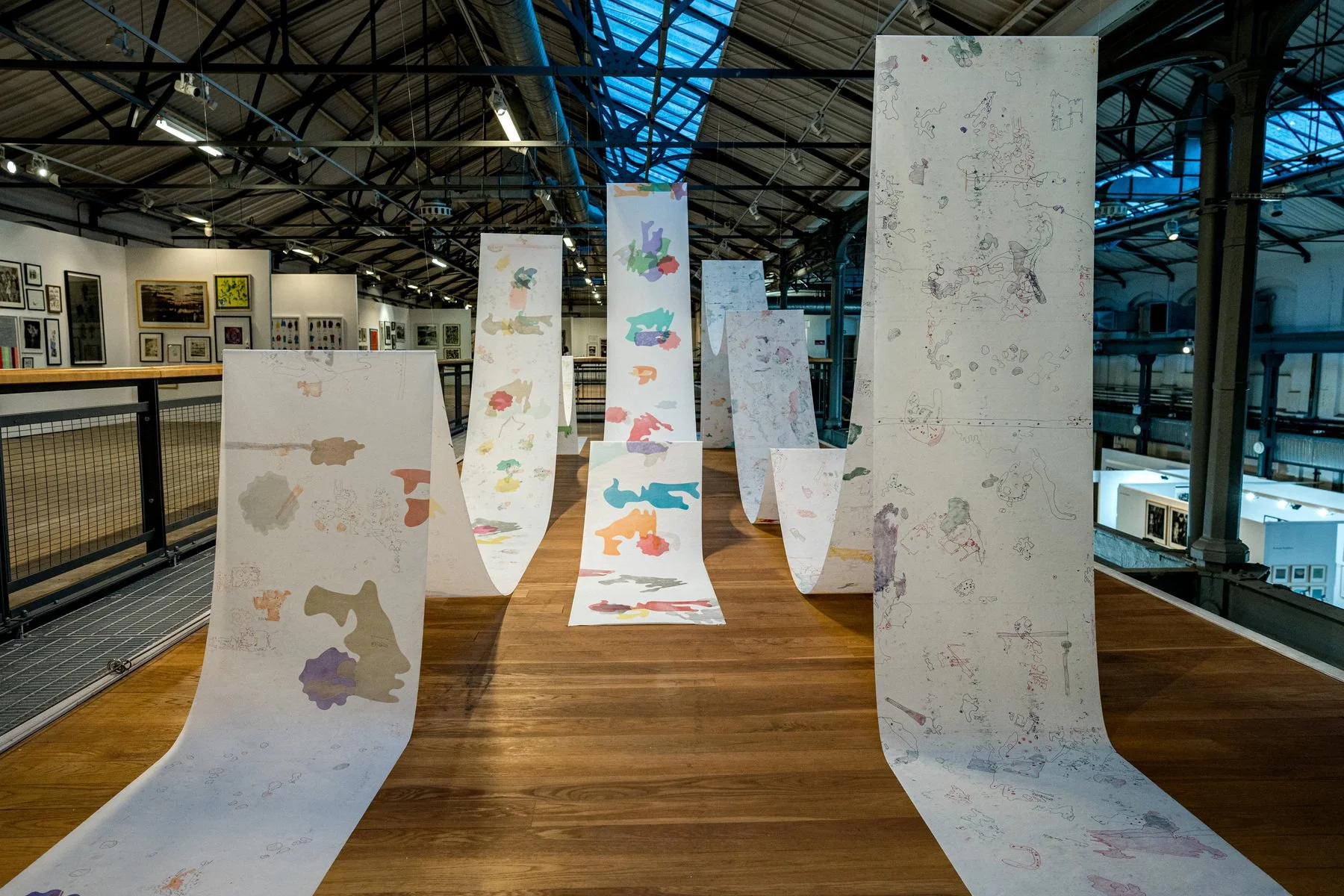Interview | TANAKA MAZIVANHANGA
Tanaka's art preserves the essence of spaces and surfaces that may be lost, capturing overlooked urban relics. Her work urges viewers to slow down and experience the familiar in new ways through her printmaking, casting, and object making.
Tanaka has exhibited work with WCPF since 2018, including award-winning installations, both within the Fair and across London through associated projects.
You say that your composition evolves and takes place during the process of making. Can you tell us more about this?
I am laid back and playful, and this extends to my practice and making process! I let the process inform me and I work collaboratively with it, opening myself to discoveries. In the mokulito monotypes for example, I have an initial idea of what the finished piece might look like, however during the interactive mark-making process, I encounter happy accidents such as smudges caused by excess ink on the surface, which I acknowledge, and incorporate in the artwork’s composition.
Your work focuses on preserving memories of spaces and surfaces. What drew you to documenting the transitory?
I am interested in how memories materialise on the surfaces of the urban landscape – derelict buildings, exposed wallpapers, textures/stains – these are the remnants of people who have been there.
I explore them through rubbings, tracings, and sometimes photographs and translate them into prints, collages, casts/sculptural pieces. Documenting these moments is compulsive for me - once they disappear, there is no record of their existence. Any memories/people connected to them are gone. What evidence is there to say that I was here or that this happened?
You originally studied Architecture. Does coming from this background inform your practice in any way?
Yes it does, but in different ways. My prints and three-dimensional pieces often move towards installations, and objects and materiality are integral and physical tangible components of my work. These are all architectural qualities. In works such as Lone Islands Series, 2019, isolated forms made from carpet pieces are stitched together, and other surfaces and textures are explored through cast objects of imprints of pavements and walls. Also, I am interested in how people interact physically with spaces, and I explore this in installations such as Floating Islands (2019) and the ongoing Utopia Series.
Tanaka’s installation at WCPF. Image courtesy of Lucy J Toms.
Your colour palette is wonderful. how do you choose it?
I was re-introduced to printmaking in my last year of architecture, and it was one of the times l could use colour without needing to justify it. My palette was limited to blues, browns, and greens – colour had to make sense architecturally. However, when l started experimenting with printmaking outside my studies, l could use vibrant colours inspired by city billboards and shop fronts. Later on, I was influenced by colours I saw during my travels around Europe and Ghana. The earlier works of the Pastel Island Series were inspired by the pastel palette of Ghana's urban landscape.
The Utopia series is a continuous and evolving project. How has this series developed over time, and what new dimensions have you explored through it?
The series' evolution is gradual. It is a reflection on previous work, an investigation into what worked, what I liked, and what could be done better.
In Utopia III, 2022, I question the treatment of surfaces through a combination of processes, including relief printing and photo transfer. I am also building the surface by recycling and collaging sections of earlier unresolved work and different textured materials, including African fabric. The idea was to highlight unique forms and emphasise certain parts of the piece. There is also a focus on the interplay between line and form, resulting in flattening and deepening spaces.
Also, in this work, there is a continued exploration of how the work is displayed and viewed. I purposefully printed it on the underlay of the paper, so when it is hung, the viewer is encouraged to look up and come in for a closer look, revealing other worlds and dimensions.
Your work has been recognised with several awards and has been exhibited widely. How have these experiences influenced your artistic development and practice?
Firstly, I want to express my gratitude for having my work acknowledged.
These experiences have influenced my work enormously, especially those where I have become an accepted part of a printmaking/creative community. They have enriched my practice and well-being, and I have benefited from kinship, conversations, exchange of ideas, and constructive feedback. This has allowed me to push boundaries and come out of my comfort zone – artistically and personally. Most importantly, it has encouraged me to reflect on my practice and how to move forward.



